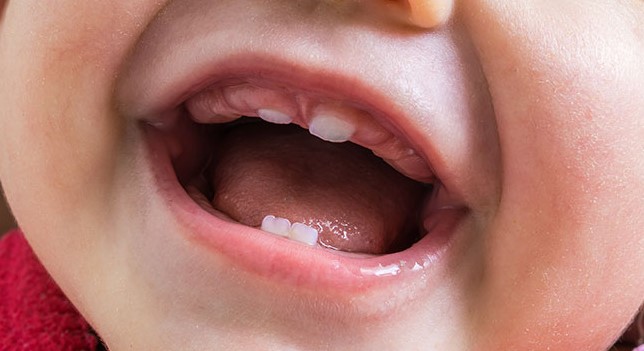

Lip tie in newborns is a condition that can cause a variety of issues for both the baby and the parents. It is a condition where the baby’s upper lip is attached too tightly to the gums, restricting the movement of the upper lip. This can cause difficulty with breastfeeding, as well as other issues such as speech impediments, dental problems, and even facial deformities. It is important to diagnose and treat lip tie in newborns as soon as possible in order to prevent any long-term complications. This article will discuss the diagnosis, treatment, and implications of lip tie in newborns.
Exploring the Diagnosis of Lip Tie in Newborns: Symptoms, Tests, and Treatment Options
Lip tie is a condition that affects newborns and can cause a range of symptoms, including difficulty breastfeeding, speech impediments, and dental issues. It is important for parents to be aware of the signs and symptoms of lip tie, as well as the tests and treatments available.
Symptoms of Lip Tie
The most common symptom of lip tie is difficulty breastfeeding. Babies with lip tie may have difficulty latching onto the breast, and may have difficulty staying latched. Other symptoms include a clicking sound when the baby is nursing, poor weight gain, and a decrease in milk supply. Other signs of lip tie include a heart-shaped upper lip, a gap between the upper lip and the gum line, and a tongue that appears to be tethered to the floor of the mouth.
Tests for Lip Tie
If a parent suspects their baby has lip tie, they should consult a doctor or lactation consultant. The doctor or lactation consultant will perform a physical exam to check for signs of lip tie. They may also use a tool called a frenulometer to measure the tightness of the frenulum, which is the tissue that connects the upper lip to the gum line.
Treatment Options for Lip Tie
If a baby is diagnosed with lip tie, the doctor may recommend a procedure called a frenectomy. During a frenectomy, a doctor will use a laser to cut the frenulum, allowing the baby to move their upper lip more freely. This procedure is usually done in a doctor’s office and does not require anesthesia. After the procedure, the baby may need to be monitored for a few days to ensure that the wound is healing properly.
Conclusion
Lip tie is a condition that affects newborns and can cause a range of symptoms, including difficulty breastfeeding, speech impediments, and dental issues. It is important for parents to be aware of the signs and symptoms of lip tie, as well as the tests and treatments available. If a parent suspects their baby has lip tie, they should consult a doctor or lactation consultant. The doctor or lactation consultant will perform a physical exam to check for signs of lip tie, and may recommend a procedure called a frenectomy. After the procedure, the baby may need to be monitored for a few days to ensure that the wound is healing properly.
Understanding the Implications of Lip Tie in Newborns: Long-Term Effects and Prevention Strategies
Lip tie is a condition in which the tissue connecting the upper lip to the gum is too tight, restricting the movement of the upper lip. This condition is common in newborns and can have long-term implications if left untreated. In this article, we will discuss the long-term effects of lip tie in newborns and prevention strategies.
The most common long-term effect of lip tie in newborns is difficulty with breastfeeding. When the upper lip is restricted, it can make it difficult for the baby to latch onto the mother’s breast, leading to poor milk transfer and inadequate nutrition. This can lead to poor weight gain, dehydration, and other health issues. In addition, lip tie can cause speech delays, as the baby may have difficulty forming certain sounds due to the restricted movement of the upper lip.
In order to prevent the long-term effects of lip tie in newborns, it is important to identify the condition early. If the baby is having difficulty latching onto the breast, or if the mother notices a tight band of tissue connecting the upper lip to the gum, it is important to seek medical attention. A doctor or dentist can diagnose lip tie and recommend treatment options.
Treatment for lip tie typically involves a procedure called a frenectomy, in which the tissue connecting the upper lip to the gum is snipped. This procedure is usually done under local anesthesia and is relatively quick and painless. After the procedure, the baby should be able to latch onto the breast more easily and the mother should notice an improvement in milk transfer.
In conclusion, lip tie is a common condition in newborns that can have long-term implications if left untreated. It is important to identify the condition early and seek medical attention in order to prevent the long-term effects. Treatment typically involves a procedure called a frenectomy, which is usually done under local anesthesia and is relatively quick and painless.
Conclusion
In conclusion, lip tie in newborns is a condition that can have serious implications if left untreated. It is important for parents and healthcare providers to be aware of the signs and symptoms of lip tie in order to ensure that the condition is properly diagnosed and treated. Treatment options for lip tie in newborns include frenotomy, laser frenectomy, and other surgical procedures. While the long-term implications of lip tie in newborns are still being studied, it is clear that early diagnosis and treatment can help to reduce the risk of complications.